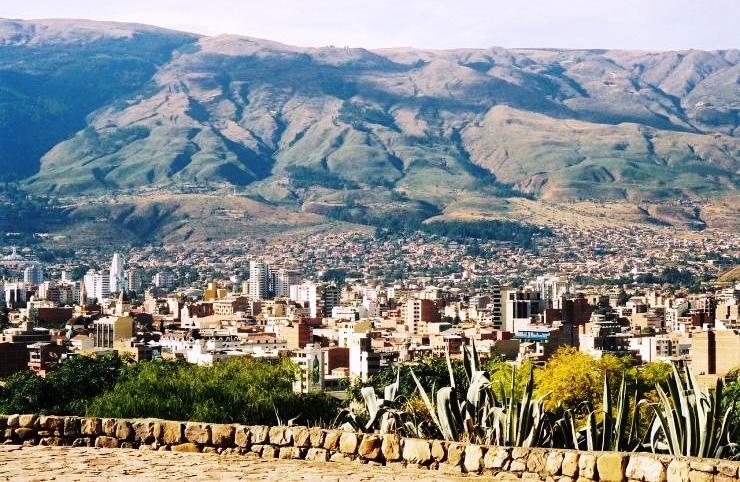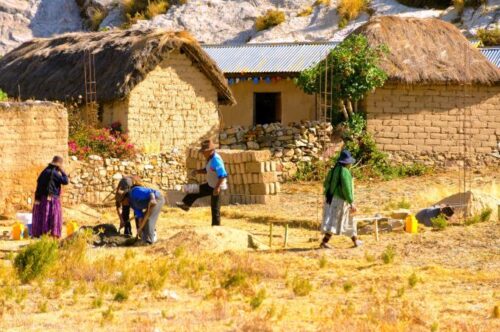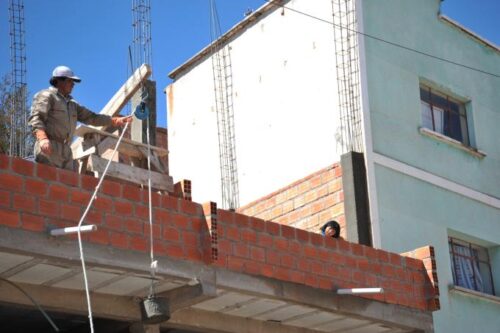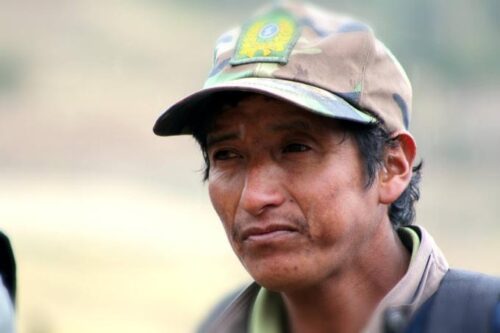Bolivia. The Q’Owaku Ritual.

The Q’Owaku ritual is performed as a blessing for workers or builders in the cities of Bolivia. But what does q’owaku mean? What is the difference between the q’owaku of the ancient Andean communities and the ritual of the bricklayers of the city of Cochabamba?
Let’s find out.
The q’owaku is an ancient ritual of the Andean communities of Bolivia, Peru, Argentina, part of Chile, Colombia, and Ecuador; it takes its name from a plant commonly found in the Bolivian plateau.
This aromatic herb is burned, and the smoke carries its incense-like smell through the air. This offering is performed to thank and ask the blessing of the ancestral spirits. There is, however, a difference between the q’owaku of the Andean communities in the countryside and the q’owaku practiced in the Andean urban areas.

People building new homes in rural areas. 123rf.
In the countryside, where this tradition originated, the Q’owaku is a communal practice to give thanks to the Pachamama (Mother Earth), and to ask the ajayus (spirits) of the great apus and achachilas for protection of crops from weather phenomena such as hail or frost, and for abundance of products and animals. This is because land and livestock are the sources of livelihood of the Andean rural communities. For these reasons, the q’owaku ritual is performed three times: one during sowing, and two during the growth of crops.
On the other hand, in the urban area, the q’owaku ritual is related to the construction of buildings and the protection of workers. The workers’ q’owaku ritual is performed at the beginning of a work to ask for the protection of the workers from any accident that may occur.

Building a new home in Cochabamba. The q’owaku of the bricklayers is generally held on the first Friday of the month. 123rf
The q’owaku of the bricklayers is generally held on the first Friday of the month. On that day, workers and owners prepare a ritual meal: ají de fideo (a traditional noodle dish from Bolivia, originally from Cochabamba), roast beef and corn accompanied with wheat chicha. But the main element for the ritual is the q’owa plant.
On the day of the ritual, bricklayers finish work between four and five in the afternoon and, along with the boss who brings all that is needed for the ritual, they start to prepare the celebration; some light a fire, others assemble all the elements to perform the ritual. They also make the ají de fideo and put it into small pots of clay that are placed in the four corners of the building; by doing so, they ask permission to Pachamama (Mother Earth) for the building of a safe house with a solid infrastructure. Then, two people – generally the master builder and the owner – hold the q’owa with their arms up and invoke the blessing of the spirits of the ancestors and the apus (the spirits of mountains), so that the workers do good work. The participants in the ritual also ask the spirits to protect them from any work accident, and that they may be paid punctually. When the fire is hot enough the q’owa plant is burned along with other ingredients. Before long, the smoke of the fire and scent of the q’owa plant fill the air. Finally, the participants in the ritual share the meal they have prepared for the celebration as a sign of unity. After eating, they chew coca leaves and drink chicha, or other drinks, and beer in cans is currently offered.

A bricklayer. The participants in the ritual ask the spirits to protect them from any work accident. Pixabay
This is an occasion that gives the participants the opportunity to exchange ideas about the construction they are going to build. In the event that the construction has already been started, their conversation focuses on the progress of the work. Everybody expresses their opinion, and this is a moment that allows for getting to know each other. Workers try to do their best in order to get a promotion. Being promoted means receiving a higher remuneration, which will serve to satisfy workers’ personal and family needs. The drinks, the coca leaves and the cigarettes are the elements that help in fraternizing and enjoying the event. This urban q’owaku ritual ends between six and seven in the evening, then everyone goes back home, because they have to get up early the next morning and go on with their work. (Open Photo: La Paz. Pixabay)
Jhonny Mancilla Pérez



